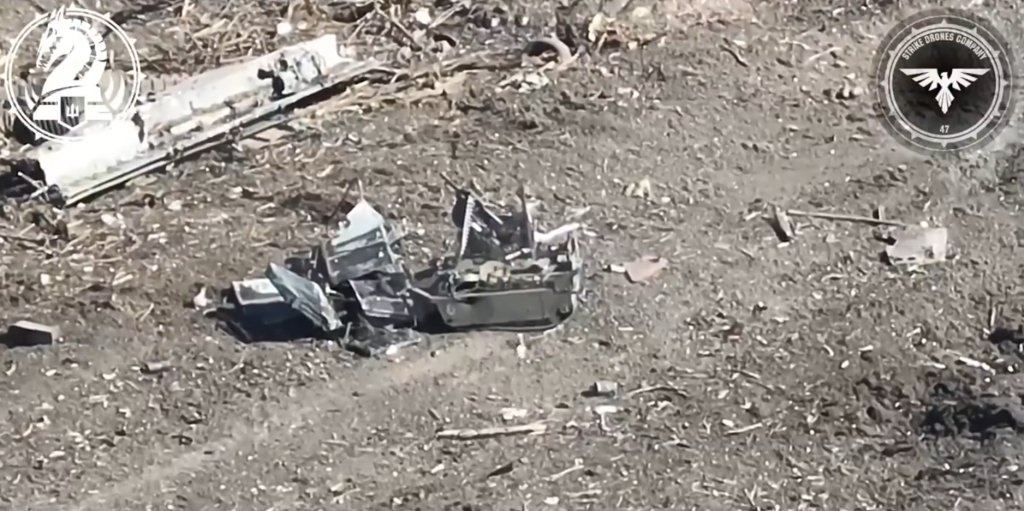Russia reaches 50 Courier remote combat vehicles in use
By Sam Cranny-Evans, published 10th November 2024.
Russian Ground Forces have now received 50 Courier remote combat vehicles (RCVs), many of which are understood to be in use in Ukraine, with 20 more to follow in short order, according to a 29th October article published by TASS.
This is an interesting development as the Courier has been developed independently of the Russian armed forces with support from an organisation called The People’s Front. Another interview with Russian news channels posted on the 4th November shows the Courier at a training ground with soldiers from Buryatia. The interviewing journalist notes that the RCV was developed by engineers from the region.
At times, the supply of Couriers appears to be crowd funded by Russian military bloggers and their supporters. One delivery that was reported in July 2024 claimed to include four Couriers, as well as eight wearable electronic warfare systems to counter Ukrainian FPV drones, and 38 quadcopter drones.
The People’s Front and one of the Courier’s developers also called for all regions to start building the RCV so that they could meet the needs of the Russian forces in Ukraine, in the interview published by TASS. This is reflective of the small scale of production that has often hampered the expansion of new capabilities in Ukraine. Both sides have struggled to increase production of drones and RCVs beyond small batches.
Technical review
The Courier is a tracked RCV that reportedly has a high level of autonomy and is fitted with a navigation and target recognition system, Boris Rozhin, a Russian military blogger states. It can also be armed with a 30 mm AGS-17 automatic grenade launcher or 12.7 x 108 mm heavy machine gun. It is reportedly designed to operate at range from the user so that Russian soldiers are kept further away from Ukrainian forces. One video indicates that they have an operational range of between 3 km and 10 km.

In this screenshot it is just about possible to see the FPV drone approaching an immobilised Courier RCV. Two of the RCVs were destroyed in this location. Credit: 47th Brigade of the Armed Forces of Ukraine.
When armed with an AGS-17 or AGS-30 30 mm automatic grenade launcher, the Courier can carry 150 rounds of ammunition which are fed into the weapon from a chute to its right. If armed with a machine gun, it can carry 250 12.7 mm rounds or 900 7.62 mm rounds. They can also be used to deploy TM-62 anti-tank mines, with capacity for up to eight mines. In this role, the mines are stored on the vehicle’s roof and deposited from a ramp at the rear of the platform. The vehicle’s payload can be augmented with a 560 W electronic warfare suite.
The 250 kg RCV is powered by 6 kW electric motors at speeds up to 35 km, although this figure is likely for road travel. The available specifications indicate a very broad operational window of 12 – 72 hours. The Courier appears to carry an electro-optical suite on an elevated mast that is provided with what is likely a protective shield. However, some element of the RCV is typically blurred out in any video footage, the reason for this is not immediately clear.
In Ukraine, the Courier has been observed conducting limited operations independently of any supporting infantry. Two appear to have been destroyed with FPVs on the Avdiivka front in March. If it is able to perform mine laying roles or usefully lay down supporting fire using its weapons, then it is reasonable to assume that the platform could be very useful in engaging Ukrainian soldiers and positions without exposing Russian soldiers to fire. However, a lot will depend on the security of the RCV’s control links, and the ability of Ukrainian forces to jam or interrupt it. If it proves to be fragile, or if the Courier can be easily immobilised by difficult terrain, then it may prove difficult for the vehicle to demonstrate any meaningful value.

Sign Up for Updates!
Get insider news, tips, and updates. No spam, just the good stuff!






